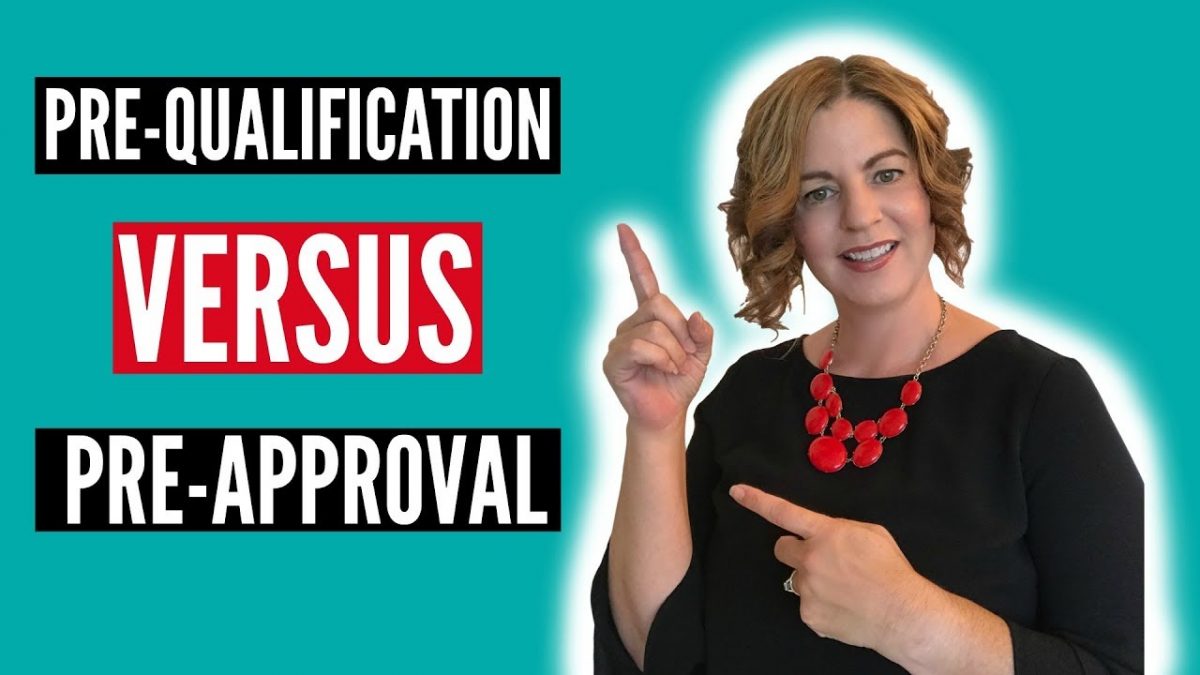
What is Earnest Money Deposit When Buying a Home
July 10, 2019
Benefits of a VA Loan
July 10, 2019Mortgage Pre-Qualification Versus Pre-Approval


Mortgage Pre-Qualification Versus Pre-Approval – What’s the Difference?
Mortgage Pre-Qualification versus Pre-Approval, what’s the difference? As you prepare to finance a new home, chances are you’ve come across mortgage pre-approval, mortgage pre-qualification, or possibly even both. Some people use the terms interchangeably, but there are important differences that every homebuyer should understand.
So, what does it mean to get pre-approved versus get pre-qualified for a mortgage, and what’s the difference between the two? Let’s take a look.
What does Pre-Qualified mean?
Pre-qualification is often seen as the first step in the mortgage process, and pre-approval is the next step. With pre-qualification, you’ll supply an overview of your financial history to the lender, including income, assets, debts, and credit score.
The lender will review this information to give you an estimate of what you would qualify for. Mortgage pre-qualification doesn’t always require documentation of your financial history; it can often be self-reported.
Pre-Qualification
A pre-qualification can be done over the phone or online, and there’s usually no cost involved. It’s quick, usually taking just one to three days to get a pre-qualification letter. Keep in mind that loan pre-qualification does not include an analysis of your credit report or an in-depth look at your ability to purchase a home.
It’s based solely on the information you hand over to the lender, so it doesn’t mean much at all if you don’t provide accurate data. Your pre-qualified amount isn’t a sure thing because it’s based only on the information you’ve provided.
It’s just the amount for which you might expect to be approved. A pre-qualified buyer doesn’t carry the same weight as a pre-approved buyer, who has been more thoroughly investigated.
What does Pre-Approved mean?
Getting pre-approved is the next step, and it’s much more involved.
You must complete an official mortgage application to get pre-approved, and you must supply the lender with all the necessary documentation (pay stubs, bank statement, salary, assets, and obligations) to perform an extensive check on your financial background and current credit rating.
The lender can pre-approve you for a mortgage up to a specified amount after reviewing your finances, as noted in the article .You’ll also have a better idea of the interest rate you’ll be charged on the loan at this point, because this is often based in part on your credit score, and you might even be able to lock in an interest rate.
Pre-Approval
You’ll receive a conditional commitment letter in writing for an exact loan amount, allowing you to look for a home at or below that price level. This obviously puts you at an advantage when you’re dealing with a seller, because he’ll know you’re one step closer to getting an actual mortgage.
The other advantage of completing a pre-approval—before you start to look for a home, is that you’ll have a good idea in advance of how much you can afford. You won’t waste time with guessing or looking at properties that are beyond your means.
Getting pre-approved for a mortgage also enables you to move quickly when you find the perfect place, and it lets the seller know that your offer is serious in a competitive market.
Key Takeaways
- Pre-qualification is based on data you submit to a lender, who will provide a ballpark estimate of how much you can borrow.
- Your pre-qualified amount isn’t a sure thing because it’s based only on the information you’ve provided.
- A pre-qualification is merely a financial snapshot that gives you an idea of the mortgage you might qualify for.
- A pre-approval letter is the real deal, a statement from a lender that you qualify for a specific mortgage amount based on an underwriter’s review of all of your financial information: credit report, pay stubs, bank statement, salary, assets, and obligations.
While pre-qualification can be helpful in determining how much a lender is willing to give you, a pre-approval letter will make a stronger impression on sellers and let them know you have the finances to back up an offer.
If you’re serious about buying a house, you need to get pre-approved right away. When the housing market is hot, homes sell fast — sometimes within hours of being listed. If you already have financing, you too can move fast, and that gives you an immediate advantage over other buyers.
I hope this has helped you learn the difference between pre-qualification and pre-approval.
10 BIGGEST MISTAKES TO AVOID WHEN BUYING A HOME
Subscribe to our YouTube Channel: http://bit.ly/YouTubeOHare


